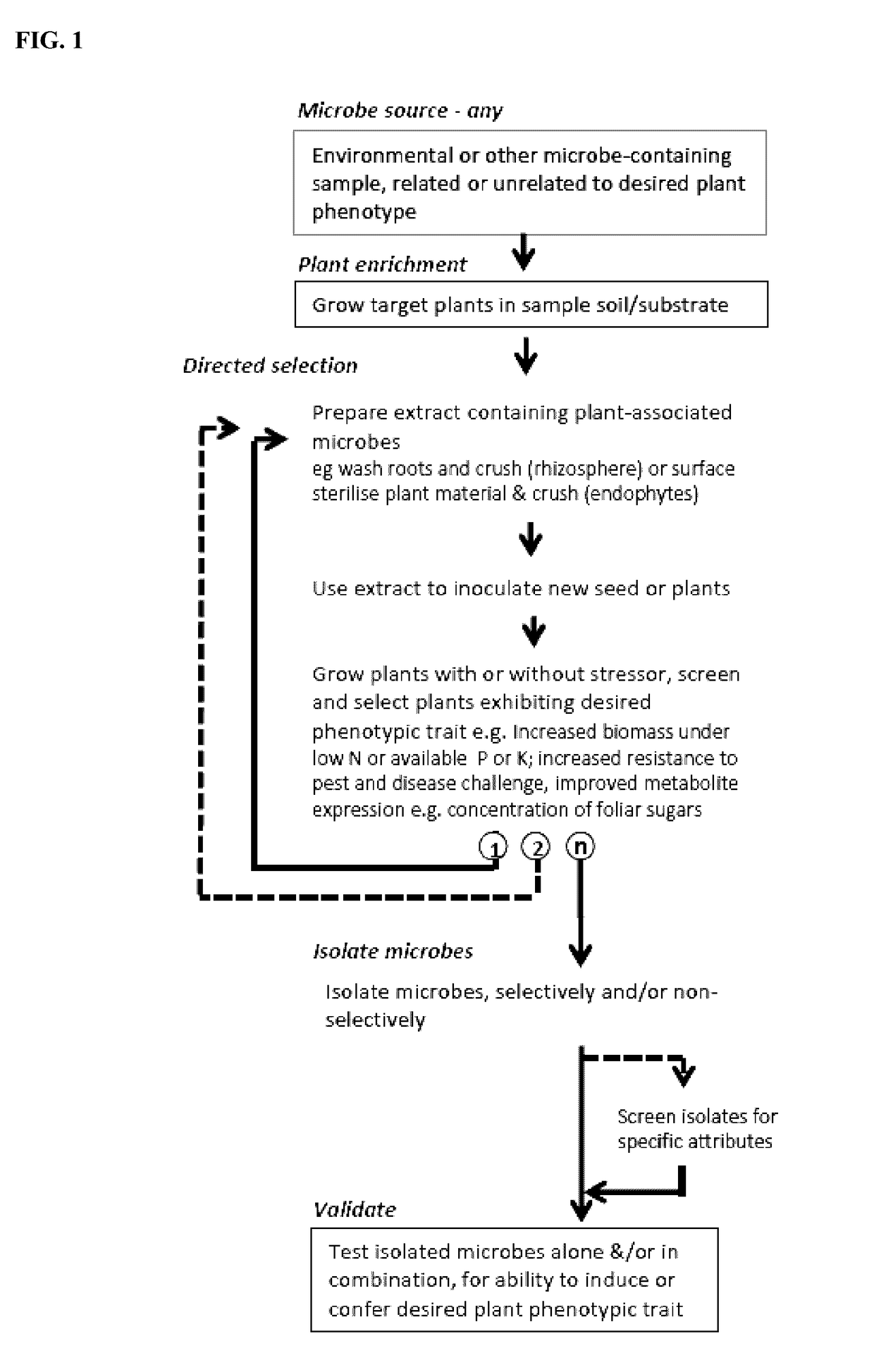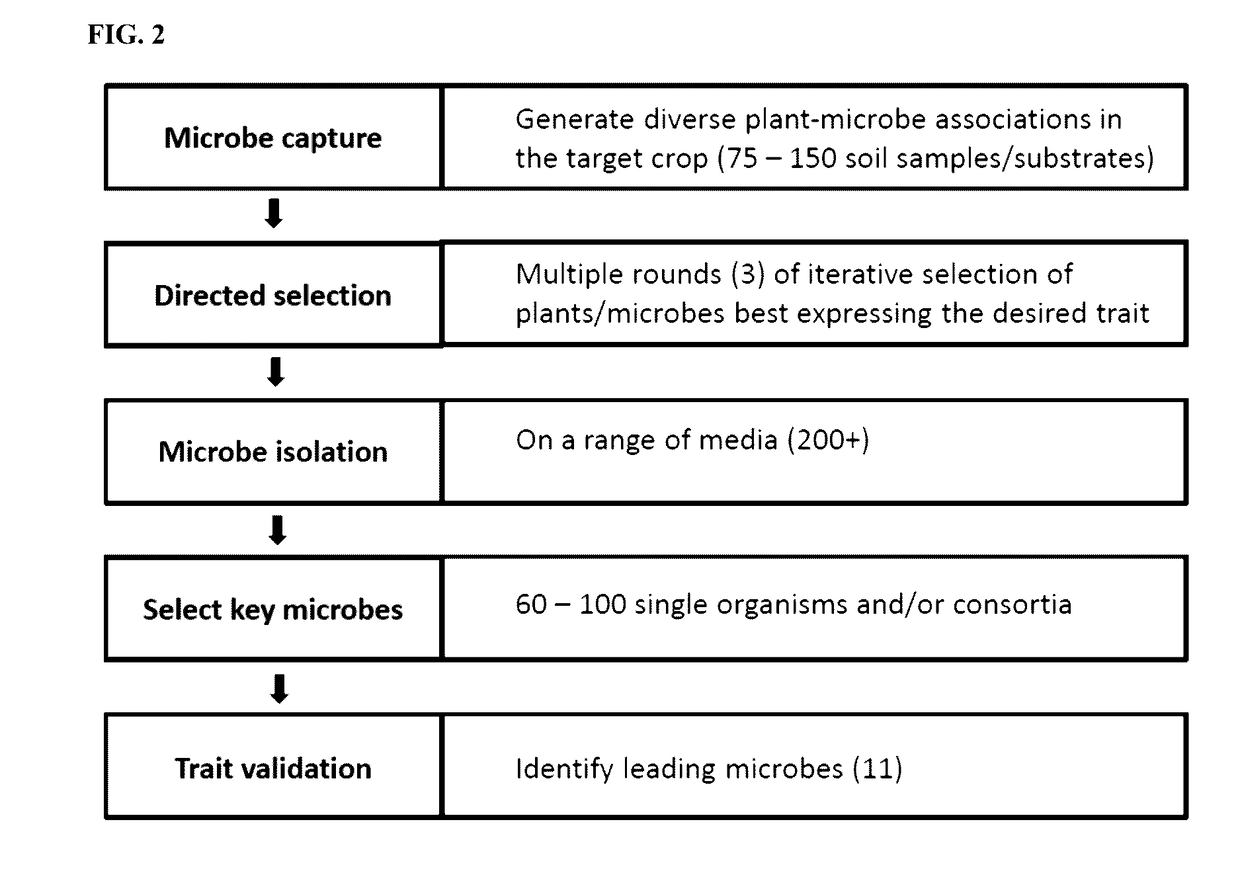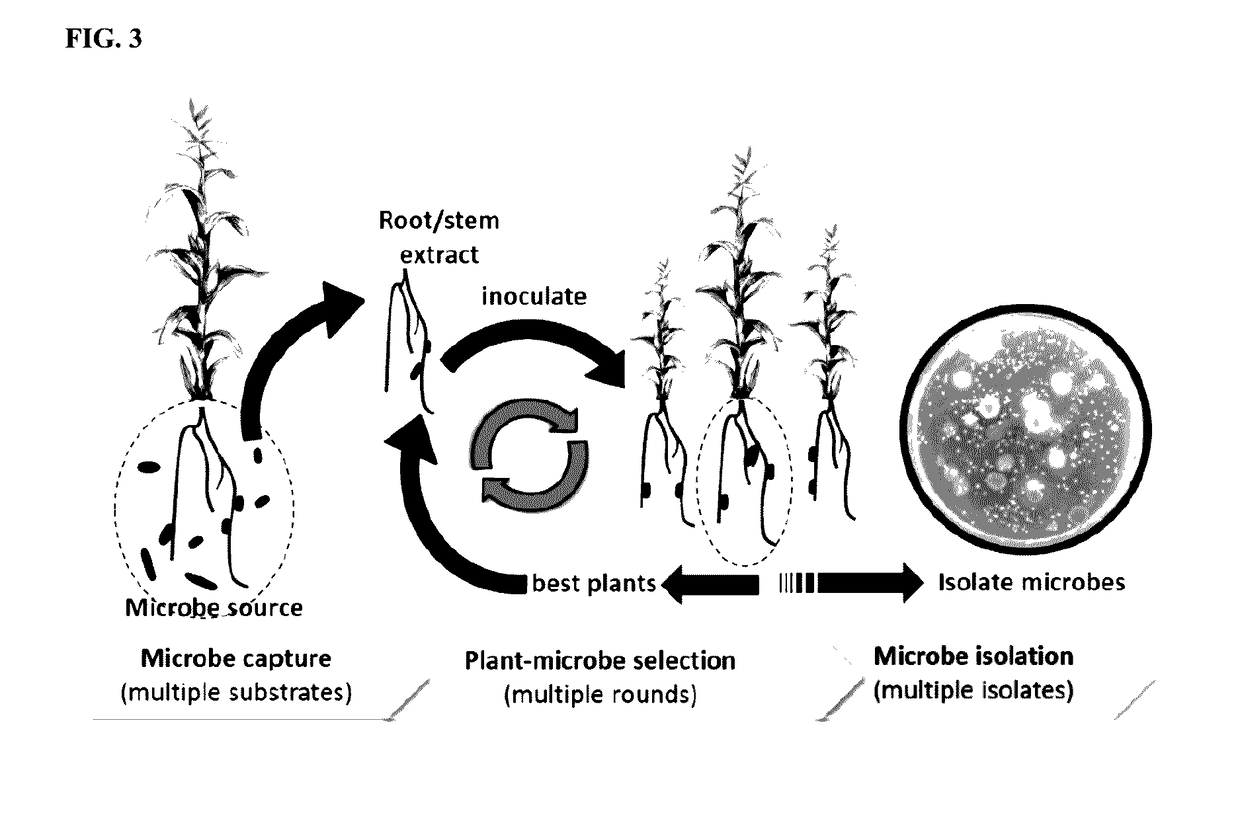Integrated plant breeding methods for complementary pairings of plants and microbial consortia
a plant breeding and complementary technology, applied in the field of plant breeding methods, can solve problems such as harm, and achieve the effect of improving traditional plant breeding methods
- Summary
- Abstract
- Description
- Claims
- Application Information
AI Technical Summary
Benefits of technology
Problems solved by technology
Method used
Image
Examples
example 1
MS-Derived Microbial Background Useful for Conferring Growth in Nitrogen Limited Soils for Maize (Zea mays) Selective Breeding
[0468]In certain embodiments of the disclosure, the present methods aim to reduce the amount of environmental variability associated with traditional plant breeding programs.
[0469]In this prophetic example, the present methods control for the microbial diversity present in a selective maize breeding program, by utilizing the accelerated microbial selection process to define a set of microbial organisms that will be utilized in a subsequent selective maize breeding method.
[0470]Step 1. AMS Process to Derive Microbial Consortia Beneficial to Maize Grown in Nitrogen Limiting Soils
[0471]Microbial Capture:
[0472]Acquisition of microorganisms may be acquired from a diverse selection of soil samples. These soil samples are not necessarily associated with areas in which maize is known to grow.
[0473]Untreated seeds of maize can be planted into each soil sample. Any num...
example 2
ected AMS Breeding of Cold Tolerant Soybeans (Glycine Max)
[0499]In this prophetic example, plant breeding methodologies are conducted and simultaneous capture of microbial communities associated with specific plants is utilized in each breeding cycle to inoculate subsequent cohorts. Soybean breeders have continually strived to select for soybean varieties with greater cold tolerance, particularly to cold soils in addition to cooler air temperatures. The microsphere associated with colder soils is expected to be different than that of warmer soils. As a result, the microorganisms associated with soybean varieties adapted to grow in warmer environments may not be the best ones for growing new soybean varieties for growing in colder climates, especially when such new soybean varieties are developed from warmer-adapted soybeans.
[0500]According to this example, two elite soybean cultivars (e.g., two homozygous or nearly homozygous soybean genotypes with proven track records) are crossed ...
example 3
-Directed AMS Breeding of Aluminum Tolerance in Spring Wheat (Triticum aestivum)
[0506]In this prophetic example, the AMS process is used on parental plant material and then the AMS-derived microbial consortia are used to conduct the plant breeding. Soils in the Pacific Northwest of the United States are naturally acidic and becoming more acidic due to agronomic practices. In wheat production, soil acidity can cause aluminum (Al) toxicity that leads to severe yield reductions.
[0507]According to this example, two elite Al-tolerant spring wheat varieties are used to pre-select for a microbial consortia that can survive and flourish in high Al levels for use in a plant breeding program selecting for Al-tolerant spring wheat segregants.
[0508]The soft white spring wheat varieties ‘Alpowa’ and ‘Babe’ have been shown to have aluminum tolerance (see, e.g., Washington State University Extension Fact Sheet FS050E, Soil acidity and aluminum toxicity in the Palouse Region of the Pacific Northwes...
PUM
| Property | Measurement | Unit |
|---|---|---|
| Fraction | aaaaa | aaaaa |
| Fraction | aaaaa | aaaaa |
| Fraction | aaaaa | aaaaa |
Abstract
Description
Claims
Application Information
 Login to View More
Login to View More - R&D
- Intellectual Property
- Life Sciences
- Materials
- Tech Scout
- Unparalleled Data Quality
- Higher Quality Content
- 60% Fewer Hallucinations
Browse by: Latest US Patents, China's latest patents, Technical Efficacy Thesaurus, Application Domain, Technology Topic, Popular Technical Reports.
© 2025 PatSnap. All rights reserved.Legal|Privacy policy|Modern Slavery Act Transparency Statement|Sitemap|About US| Contact US: help@patsnap.com



